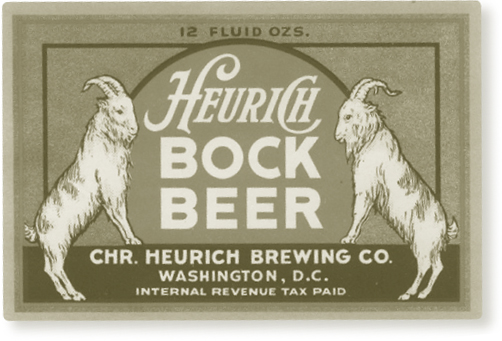
Most people have seen beery images involving wooden barrels and goats, those old-fashioned pictures that don’t quite make sense but seem familiar. That is bock. It’s an old style of beer, but not excessively so. Mainly it has endured, especially rare in places like the U.S. where so few styles did. What remains of bock in the cultural imagination is a strong beer and perhaps a vague prejudice against the old, as one might maintain against horehound candy.
The strong part is right. Even the relatively light May bocks are sturdily built, and darker doppelbocks and eisbocks are among the strongest beers in the world. Any prejudice against them, however, is misplaced. Like so many beers of German origin, bockbiers are malt-centered and brewed for refinement. Like märzens, bocks are often made for special occasions—to usher in the cold, the warmth, or to fortify during the Lenten season. ■

WHEN ANYONE STARTS telling the family history of bock beer, they haul out an old scrapbook and point to a photo of great-great-grandpa Bock, who lived in the northern German town of Einbeck. There’s no doubt that a Mr. Bock lived there, and he was a famous resident indeed. An important shipping town, Einbeck sent its beer far from home. We know that as far back as the 1570s, Munich had imported beer from Einbeck, which according to a 1612 source was a “thin, subtle, clear … bitter” beer that had “a pleasant acidity on the tongue, and many other good qualities.” You can see from that description that the ancient Einbecker beers were very different from the lagers we know today. They were ales and, like other northern beers, soured by wild yeasts.
The bock scrapbook ought properly begin with a picture of Elias Pichler. He was an Einbecker trained in the ways of the town’s beers, but in 1614 he took a job in Munich running the newly opened production facility of the Hofbräuhaus. The royal household that owned the Hofbräuhaus wanted something potent like the Einbecker beers and charged Pichler with the task of crafting a Bavarian facsimile. The beer he brewed was an entirely different beast. Working in the lager tradition, Pichler did a lot of experimenting before he came up with a beer he called “maibock.” That was the first true bockbier, and while it may have taken inspiration from beers brewed in Einbeck, it was Bavarian through and through.
Doppelbocks were another Bavarian invention, and their connection to Einbeck is all the more tenuous. They were originally brewed by Franciscan monks near (and what is now in) Munich. They brewed a special extrastrong bock, and later began selling it during the Feast of the Holy Father. The beer was known as Sankt Vater Bier (“holy father beer”), later shortened to Salvator. The eight-day festival that accompanied the beer’s release was widely attended and it became customary to toast the duke of Bavaria with Salvator. Salvator beer was a style of its own—a very heavy, sweet, underfermented concoction. This may help explain why monks used it to ease them through their days of fasting during Lent. Unlike today’s much more alcoholic doppelbocks, old Salvators were heavy but modest in their alcohol content—“liquid bread” indeed.
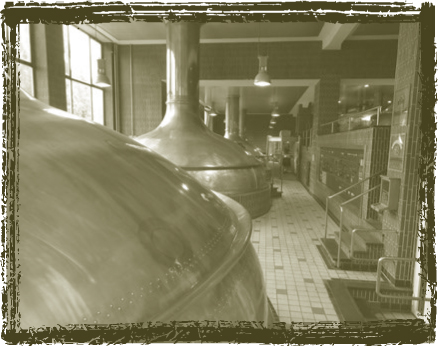
Salvator is still made in a beautiful, Old World copper brewhouse.
In 1799, the monks sold their brewery to the state. A few years later, a brewer named Zacherl purchased it—and still later, the brewery changed its name to Paulaner. As the decades rolled by, “salvator” became a generic name, like helles or märzen, that referred to doppelbocks. Dozens of Bavarian breweries already offered their own salvators when Paulaner applied for and was granted a trademark on the beer around the turn of the twentieth century. To retaliate, brewers appropriated that -ator suffix, so now there are countless variations on that theme: Celebrator, Animator, Optimator, Maximator, and so on. One senses the memory of this transgression remains a faint irritant, at least to the other breweries. Paulaner, however, celebrates this history by reprising the festival every year around Lent and tapping a barrel of Salvator.
The Einbeck Bocks. Einbeck joined the Hanseatic League in 1368, when member towns Bremen and Hamburg had already been shipping beer as far as Scandinavia and Britain. Though late to the party, Einbeck made up for lost time with quality. The town maintained its own brewing equipment and employed professional brewers. Town burghers could malt their own grain and brew their own beer—but they had to use the city equipment to do it. The equipment was small enough to haul around from house to house, and the wide gateways built to accommodate the kettles and tuns are still visible in some of the older buildings in Einbeck. The brewmaster was responsible for monitoring malt quality and overseeing the brewing process. Everyone had to use the same recipe and adhere to the same standards of brewing quality. Finally, all beer brewed in Einbeck had to be certified by the town brewmaster before it could be sold or exported, ensuring the name “Einbecker bier” was always associated with quality.
Towns all across northern Germany made beer, and some achieved minor levels of renown. But Einbeck’s status knew few peers. No less than Martin Luther, defending himself in front of the Assembly of the Holy Roman Empire, had a jug filled with Einbecker beer. He said it was the “best beer known to man.” Perhaps even more telling, it was famous enough that a duke in distant Munich would hire an Einbeck brewer to reproduce it closer to home.
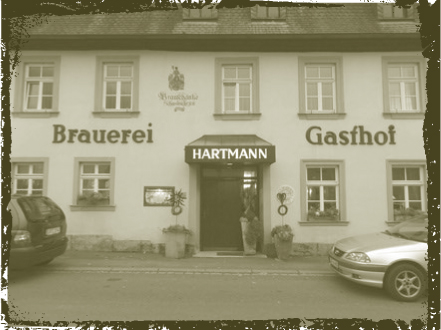
In October, Brauerei Hartmann in Würgau releases a luxurious bock.
The one bock developed outside Munich is the oddest: eisbock, or ice-bock. The history of this style is claimed by the brewery that makes one of the most famous versions, Kulmbacher. There’s no reason necessarily to dispute it, except that independent documentation is hard to find. (Brewery histories aren’t always the most scholarly works, particularly when the PR department sees a benefit in certain claims.) But Kulmbacher’s story is this: Back in the fall of 1890, a brewer at the Reichelbräu brewery (now owned by Kulmbacher) forgot to move two barrels of bock into the cellar. They spent the winter out in the harsh Franconian weather getting buried under ice and snow. When they were discovered the following spring, the barrel staves had burst, but inside a bit of bock remained trapped in ice. The beer’s water had frozen, leaving behind a concentrated elixir—the world’s first eisbock. ■
Bock’s Strange Name. Bottles of bock regularly feature a goat on the label—a visual pun. One of the meanings of bock in German is “goat.” But how did the beer come to be called bock in the first place? Well, let’s step back. Germany is a land of many dialects. In the 1880s, an imperial linguist named Georg Wenker found that there were nine separate dialects across Germany. Even today, Bavarians are ribbed by northerners for their funny accents. So imagine the late sixteenth century, when Einbeckers (Wenker called their dialect “west low German”) were shipping their beer to Munich. What started out as Ainpöckisch bier in Einbeck eventually ended up as bockbier in Munich. Neither city’s pronunciation had anything to do with goats.
EVERY OCTOBER, AS the chill begins to blanket the Franconian countryside, breweries schedule special barrel tappings for their bockbier. In Bamberg, the streets outside breweries—Mahr’s, Schlenkerla, Fässla, Ambräusianum, Spezial, and more—fill up with revelers holding half-liter mugs of the strong stuff. Before the night is over, there will be dancing, kissing, toasts galore. If märzenbier is the most purely celebratory of the German styles, then bock is the style used for transitions. They welcome the cold in Franconia, but in Munich doppelbocks are associated with the Lenten season. And when the spring has finally cracked the winter ice—but before the first summer heat wave—that’s the time for May bocks.
Bock is not only a type of beer, but according to German law, also a category—stark or “stout” beer—which is to say, strong. (That ought to serve you well in beer trivia, too. The German stout? Why bock, of course.) Pale bocks, however, are brewed to usher in the warmth, the first days in the biergarten. They must therefore have a delicate touch—robust but light. It’s one of the hardest tricks to pull off and too many end up sweet and gluey. Done right, a maibock will have a delicacy of malts, soft and creamy but crisp, and a tracery of hops to stiffen and enliven the presentation. There’s no reason a maibock has to be light-colored—those first lagers made by Pichler surely were not—but even the darkest are still only a dark honey hue.
Imports from Germany are rare, and American examples, usually seasonal, aren’t thick on the shelves, either. There are some excellent ones, though, from Sprecher’s slightly underweight but sumptuous Mai Bock, which picks up a bit of crispness from a wheat addition, to Smuttynose’s super-heavyweight Maibock, a malty boomer that surprises with its light, lavender-hop finish.
In the last decade, ale brewers have been pumping their beers with steroids to come up with imperial-this and triple-that. Long before those came along, doppelbocks reigned supreme as the kings of the beer world. It’s not just their strength—everything about doppelbocks impresses. They are dark, sometimes with sparkling ruby highlights, as clarion as a mountain lake, and as rich and smooth as mousse. It’s like driving a very powerful sports car; you sense the power coiled inside, but all you can hear is a low, purring rumble. In some ways, doppelbocks are the best examples of a lager. In strong ales you find not only malt sweetness but also ester fruitiness—they must be balanced with roast or hops. Well-made doppelbocks have only the pure flavors of malts—and usually not a lot in the way of hops. They may have toast and bread or darker flavors—chocolate, licorice, treacle—and they’re the style most likely to nod in the direction of roastiness. All of those flavors bathe the tongue in cultured sophistication, but the drinker, feeling a warming rush, can sense that underneath it all is a well-concealed alcohol charge.
One of the most-lauded dopplebocks is Ayinger’s Celebrator, which attracts praise for its balanced complexity. It is also an unusual one, just 6.7% strong, but rich enough that no one would dare exclude it from the pantheon of stronger versions. It is more common that these beers rise to around 8% ABV, though, as is the case with the classic from Paulaner and Weihenstephan. In Madison, Wisconsin (a state with a strong German heritage), Capital Brewery has something of a cottage industry in doppelbocks. Autumnal Fire is, as brew-master Kirby Nelson calls it, “Capital’s most notorious product,” and a wonderful American doppel. Just a shade under 8%, it has bread and caramel in the malts, a hint of hoppy spicing, and an instantly warming wash of alcohol.
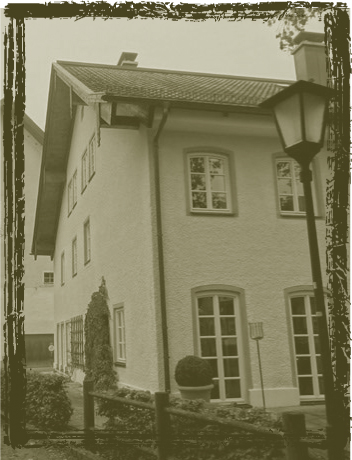
The old Ayinger brewery, where Celebrator was born
Bockbieranstiche. The small Franconian town of Bamberg is off the beaten path. It was remote enough to be spared the bombs of World War II, and as a result, the entire old town was listed as a UNESCO World Heritage site in 1993. The cobblestone roads, medieval half-timbered buildings, and ancient churches are enough to draw tourists aplenty, but Bamberg also has a special place in the heart of beer lovers. Home to nine breweries (in a town of just 70,000 residents) and the famous Weyermann maltings, it is touted by the tourist council as “the beer city.” No time is better to experience the city than the fall, when breweries take turns hosting bockbieranstiche—“bock beer tapping.” Much of what happens in Bamberg feels as though it’s been happening there a long time, and being handed a krug of beer poured straight from the barrel before joining the townspeople filling the streets makes it easy to imagine you’re in a scene from centuries past. For a list of the barrel-tapping dates, visit bamberg-guide.de/bamberg/bierundbierkultur/bockbieranstiche.php.
Samichlaus. One of the strongest beers in the world was first released in 1980, long before anyone expected that such a thing would be a fad. The beer was called Samichlaus, brewed by the Hürlimann Brauerei in Zurich. A titanic beer at 14%, it had the distinction of being fermented naturally—still an impressive feat. Hürlimann brewed it only one day a year, on December 6, then put it in conditioning tanks for most of the rest of the year. It was a celebrated and beloved beer, but that was not enough to save Hürlimann, which closed in 1997. But that was not the end of the story. With the help of some of the Hürlimann brewers and the original recipe, the beer was revived, but this time in Austria by Schloss Eggenberg. This particular brewery was an apt savior, having already been a longtime maker of another titan called Urbock 23. (The number refers to the gravity.) Most everything remains the same for Samichlaus: the stunning strength, the single day of brewing, even the label. It has remained, for over thirty years, in the upper reaches of doppelbock muscularity.
There’s something vaguely disreputable about eisbocks—though it’s not their fault. When they are brewed for flavor, they can astonish. But beginning in the mid-1990s, breweries began to use the technique of freeze-distillation to create beers at liqueur strengths. Samuel Adams was on the forefront, introducing a beer called Utopias that reached 27% in 2007 and sparked a strength war that led to a Scottish brewery making a 65% (130 proof) “beer” in 2012. It hasn’t helped that national companies have used freeze-distillation to make down-market beers like Icehouse, Busch Ice, and Natural Ice. The distillation process doesn’t add a lot of oomph (these beers usually run 5.5% to 6% ABV), but it does tend to concentrate some of the less appealing mealy qualities that light lagers conceal predistillation.
True eisbocks, which weigh in at a much more modest 10% to 15%, should not be relegated to beer’s sideshow. Indeed, they can be quite impressive. Distillation concentrates flavors, which means balance is everything to these beers. Hops can quickly become jagged knives; malt can easily turn into plum preserves. Good eisbocks, like Kulmbacher Eisbock, push the richness right up to the edge without going over.
While most dark bocks are doppelbocks and most maibocks are light-colored, there is a rarer dark bock brewed below doppel strength. Like dunkel lagers, dark bocks take a bit of flavor from the added malts, but they are rounder, sweeter, and more on the cocoa-chocolate continuum than the roasty-coffee one.
In the United States, there remain a few examples of beers called “bock” from previous generations—Shiner, Genessee, and Huber. They’re a strange kind of hybrid beer, refugees from an early, benighted time in American history. As beer got progressively weaker and less interesting, American bock beers lost their strength. The ones that remain are no stronger than standard American lagers—4.4% to 5.5% ABV. But Americans, who associated color with strength, nevertheless thought of these beers—dark amber to brown—as “strong.” They could constitute their own style, except they have been fading from the scene for decades. They were brewed for drinkers of a different time and don’t seem to have any natural place left in the beer landscape. ■
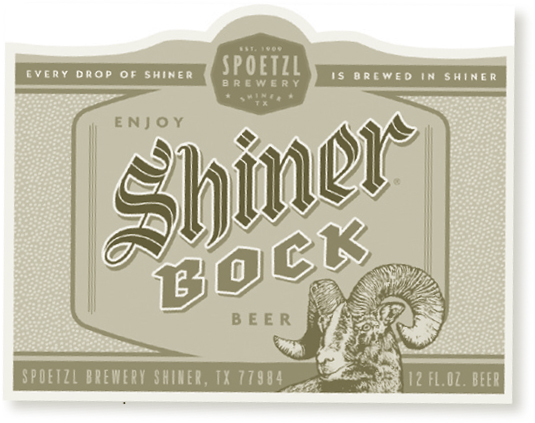
THE METHODS AND techniques of brewing bocks don’t differ appreciably from any other type of German lager, save for recipe formulation. What is different, however, are industry standards and expectations. A perfect example of this is the doppelbock made by Jürgen Knöller at Missoula’s Bayern Brewery. Knöller, a Bavarian, trained and began his brewing career around Munich. “I worked for four different breweries in Germany; of those four three are no longer,” he said, warming up to the story of how Bayern Doppel Bock came to be. “The first one was Brauerei Schiff—‘Ship’—and we had a very traditional brewery. We are talking a four-vessel brewhouse with a falloff tank—whatever that is in English—it’s a fifth vessel. It had a cool ship, it was beautiful. We did beers there that I have never really seen being brewed anywhere else.”
It was such an old brewery that it used a device something like a hop back that both extracted fresh hop aromas as it went through and also filtered the hot break. Then the beer went to a cool ship where it would go through the cold break. “They were just terrific beers,” Knöller said. “The doppelbock they brewed—they left it in the tank for almost a year. In Germany [we won a number of awards].” Of course, breweries have become much more modernized since the 1970s. The owner of the Schiff brewery died and eventually the brewery was lost through the mismanagement of subsequent owners.
But the Bavaria Knöller brewed in was a different one, too. “Now, when we were brewing in those days back in Germany—well, put it this way: I’m still brewing the German lager beers from 1985. What’s different between our beers here in general is that they’re all probably a little bit stronger, a little bit darker, whereas in Germany they have gotten a lot lighter.” Even in Bavaria, where there are practices dating back to guild law and rules that date to Reinheitsgebot, change is a constant. The 1970s, when Jürgen Knöller was running hot wort into a cool ship, were not that far removed from today, yet the production methods have changed dramatically and the beers have changed a bit, too. Sometimes, it’s easier to see the shift through the eyes of an expat. ■
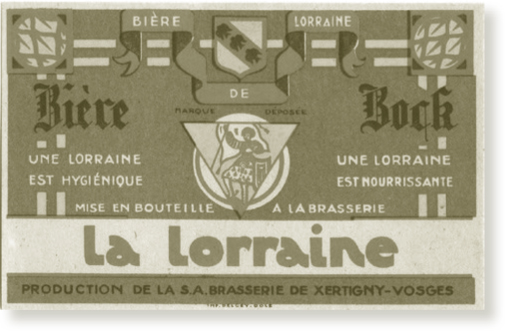
ALTHOUGH THEY ARE considered a special brew, only one in a hundred beers brewed in Germany is a bock. The style never had a moment, like dunkel lager and export, when it was a national leader. That element of specialness seems to both preserve and limit it in its home country. When German immigrants began populating foreign lands, they took their bocks with them. That was certainly true of the United States. Bocks have been brewed continuously since Germans arrived, and they were one of the few styles to survive Prohibition and consolidation. That familiarity seems to have limited their currency in the new wave of craft brewing.
If there is a bit of new movement, it’s happening where breweries are attempting freeze-distillation in search of superstrong beer. The absolute numbers of these kinds of beers are quite small, but the attention they receive is inversely proportional. Samuel Adams kicked off the trend and has been releasing a beer called Utopias every two years for more than a decade. Breweries in Scotland, Belgium, Italy, and Germany have tried their hands, making perhaps three dozen beers north of 20% ABV over the years. Breweries begin with all manner of base beers before they distill, so it’s difficult to think of this as a style. Moreover, the effort required to freeze and refreeze and refreeze the beers means they’ll never be much of a commercial venture. But as publicity goes, they seem to have a fair amount of life left. ■
BOCKS ARE ONE of the most famous styles, especially to the layman, but they are brewed at best sporadically in the United States. Places rich with German heritage, like Wisconsin and Pennsylvania, have the most reliable offerings. Doppelbocks, with cross-genre appeal, are slightly easier to find.

LOCATION: Milwaukee, WI
MALT: Pale, caramel, wheat
HOPS: Mt. Hood, Tettnanger, Willamette
6% ABV, 1.061 SP. GR., 24 IBU
A honey-colored beer that also has a touch of honey in the nose, along with fresh-baked bread and caramel. The brewery dry-hops the beer. That, combined with the slightly low gravity, takes it outside the strict guidelines for the style—but it’s an inspired choice, giving the beer a freshly floral scent that accentuates the otherwise herbal character that comes from kettle hops.

LOCATION: Einbeck, Germany
MALT: Munich
HOPS: Hallertauer, Hersbrucker, Perle
6.5% ABV, 1.065 SP. GR., 32 IBU
Einbecker dates back to 1749, when the city combined brewing rights to create a single brewery. Mai-Ur-Bock, released each March, isn’t actually the first maibock—“bocks” may have originally come from Einbeck, but not lovely, toffee-rich confections like this lager. It’s a reimport from Munich, but a worthy member of the canon.
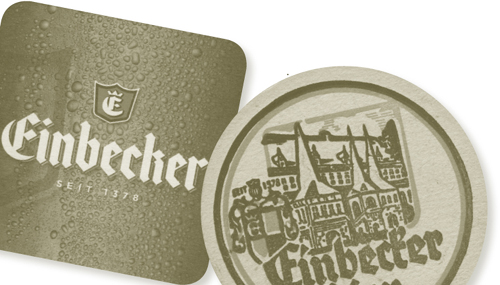
Distilling a Stronger Beer. As I write this, the current record holder for strongest distilled beer is a small brewery in Scotland called Brewmeister, which made 65% ABV Armageddon in 2012. The trouble is that a single freeze only adds a few points of alcohol. To get to these extraordinary heights, a brewery has to refreeze the beer over and over again. For a time, the German brewery Schorschbräu held the record. Brewer Georg Tscheuschner explained why it is so hard: “To create the 43% beer, I had to filter around fifteen times. I actually lost count, but I think it was fifteen times. You end up with only fifty liters from the 800 to 1,000 liters that you started with.” Since he broke the record in 2010, it has been broken a couple more times since, and some brewery will no doubt pass Armageddon. There is a physical limit, though (70%? 75%?), and once breweries reach it, the fad ought to lose steam.

LOCATION: Pittsburgh, PA
MALT: Pale, Munich, chocolate, dextrin, caramel, black
HOPS: Perle
6.5% ABV, 1.061 SP. GR., 25 IBU
One of the rarer dunkel bocks, Penn’s is brewed in the Bamberg tradition of warming up cold fall evenings. The malts create a wonderful play of blackened toast, nuts, and cinnamon, and it finishes with a dollop of toffee.

LOCATION: Downington, PA
MALT: Pale
HOPS: Tettnanger, Saphir
7.5% ABV
Perhaps the name’s ironic—there’s nothing boisterous about Victory’s quietly powerful pale bock. The flavors are all turned to “subtle”—silky malts that have touches of bread and a gentle, floral scent that has a note of citrus. The alcohol warms but does not impose.

LOCATION: Aying, Germany
MALT: Undisclosed
HOPS: Undisclosed
6.0% ABV, 1.055 SP. GR., 24 IBU
Celebrator impresses even before bringing a nose or tongue into play. Pellucid despite its dark color, Celebrator has a scent of raisin and molasses—warming, comforting smells. They open up in the mouth so that the darker flavors, molasses and roast, are center stage, yet are limned in sweet toffee. I find the plumminess of aged beer in Celebrator, which makes it seem rare and special.


LOCATION: Missoula, MT
MALT: Undisclosed
HOPS: Saaz, Hallertauer, Perle
8.1% ABV, 1.080 SP. GR., 23 IBU
Bayern hides the alcohol as well in this beer as in any brewed, and it does it in satiny folds of malt. The flavors begin sweetly, something like chocolate fig, and then deepen through toast and nut to something almost like rye. Rich but refined, and dangerously drinkable.

LOCATION: Madison, WI
MALT: Pale, Munich, honey
HOPS: Hallertauer Mittelfrüh
7.8% ABV, 1.081 SP. GR., 30 IBU
The name must have been inspired by the color, which smolders sunset-orange—lighter than most doppelbocks. The overall presentation actually recalls a märzen—lovely bready flavors balanced by very fresh, peppery hops. (I can’t imagine how many pounds of Mittelfrüh, a low-alpha strain, would be necessary.) With warmth, honey notes emerge.

LOCATION: Eggenberg, Austria
MALT: Undisclosed
HOPS: Undisclosed
14% ABV
Samichlaus is something of an acquired taste. At first contact, you might mistake it for pancake syrup. Too strong to have much in the way of effervescence, it is a viscous, sweet beer that gets most of its balance from the warmth of alcohol. A veritable catalog of malt flavors if you can brace yourself and withstand the intensity.
THE VILLAGE OF AYING IS JUST FAR ENOUGH SOUTH OF MUNICH TO BE NESTLED AMID A GREEN CARPET OF FARMLAND. IF YOU’RE NOT PAYING ATTENTION, YOU CAN SAIL RIGHT PAST THE NEW AYINGER FACILITY AND DROP INTO THE TOWN PROPER, AS I DID ON A MISTY AFTERNOON IN OCTOBER. THE OLD BREWERY IS STILL IN ITS ORIGINAL LOCATION—OR THE SHELL OF IT IS, ANYWAY—AND STANDING IN FRONT OF IT IS THE 350-YEAR-OLD ONION-DOMED ST. ANDREAS CHURCH MADE FAMOUS ON AYINGER’S LABELS. THE SCENE ON THE LABEL IS BUCOLIC AND NOSTALGIC, BUT THE REAL THING, ESPECIALLY SEEING IT SHROUDED IN FOG, SEEMED WEIGHTIER, MORE HISTORIC.
This was where they began brewing in 1878 and continued for 120 years. The brewery managed to weather two wars, changes in family leadership, and competition from the big breweries up the road in Munich. Following German reunification, the Inselkammer family looked at their aging brewery and realized they had to make a decision—reinvest in new equipment or close up shop. It was no small financial commitment; once the family voted to spend the money, they ultimately put up 21 million marks to build the new facility just west of the old brewery. I finally found the new place after a local Ayinger told me that I passed it coming into town.
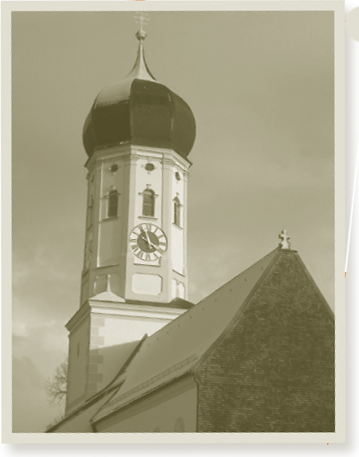
The iconic spire of Saint Andreas, which also adorns Ayinger’s labels
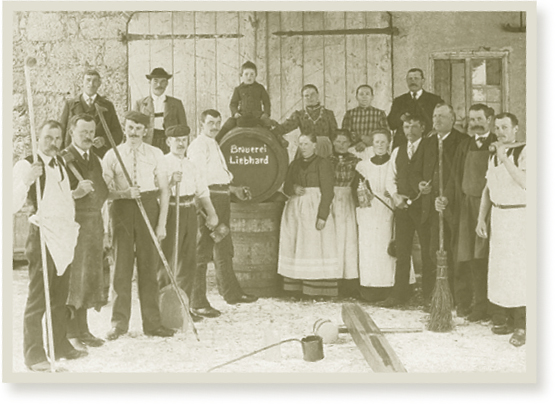
Ayinger flourished under Johann Liebhard’s leadership in the late nineteenth century.
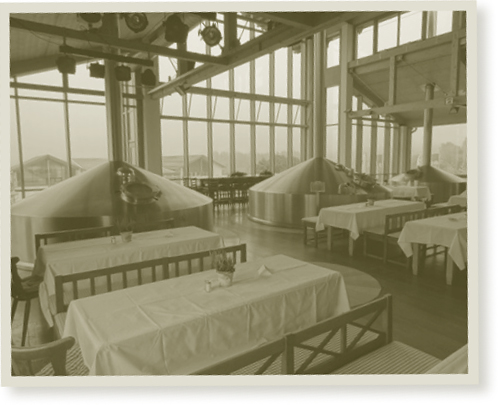
The new brewery, built like a lodge, was designed with hospitality in mind.
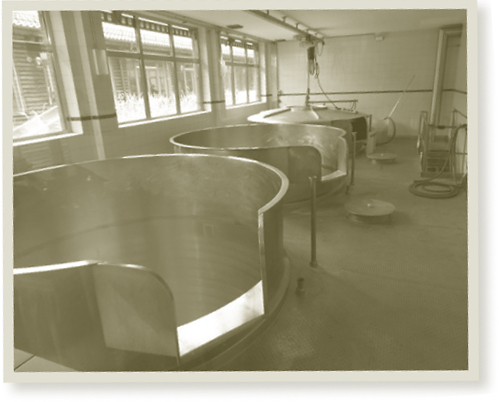
The traditional Weissbier open fermenters are separated from the rest of the brewery.
By Bavarian standards, where age is measured in centuries, Ayinger is only entering a feisty adolescence. With an annual production of just 85,000 barrels of beer, it’s also a lot smaller than titans like Spaten and Paulaner. But youth, small size, and family owner-ship—combined with a recent near-death experience—infuse Ayinger with a kind of daring that is rare in German breweries. Still, Ayinger also has a streak of traditionalism that can seem almost quaint. So on the one hand, the Inselkammers have built one of the most modern breweries in the world, outfitted with advanced energy-conserving green technology. On the other hand, they have erected a special glassed-in cube to protect the process of traditional open fermentation for their wheat beers. It’s unusual for German breweries to sell so many different brands, but Ayinger has twelve regular-rotation beers. All of them are in the lineage of Bavarian styles, and the Inselkammers only use local ingredients: hops from Hallertau and a source near Nuremberg, malt from Regensburg and Bamberg. They even dug a 577-foot well to tap into pure mineral water below the brewery.
The most striking change was their decision to abandon decoction brewing. Decoction is no longer the standard in German brewing, though it’s not uncommon in Bavaria. But more to the point—the brewery made the decision after it had already installed the new brewhouse. There’s the mash cooker, big as day, but the brewery decided it wasn’t adding anything to the beer except time and BTUs, so they switched to temperature-controlled mashing.
By skipping the slow decoction process, Ayinger manages to speed six 150-hectoliter batches through the brewery each day at the height of the summer season. The system is fairly typical, although the wort is boiled under pressure. Afterward, the deep-well water cools the wort, warming in the process before being used in the next batch. The wheat beers go to the glass cube, where they’re pitched with an ale strain so hardy Ayinger can harvest and repitch for up to three years. The lager yeast is a strain new to the brewery, and they reuse that, too, but only up to seven or eight generations (typical for lagers). No beer spends less than a month lagering, and some spend four in the conditioning tanks—though Ayinger conditions their beer warmer than some breweries, at around 45°F.
It suggests a company that is committed to the traditional flavors of Bavarian beer, but using only those methods the Inselkammers believe are necessary to produce them. You can’t argue with the results. From top to bottom, there is no brewery that produces better and more consistent beer than Ayinger—including a märzen, dunkel, export lager, hefeweizen, dunkelweizen, maibock, and doppelbock that are all considered standards for their style.
If you look at the ratings sites or read beer reviews, you know that Ayinger’s weizen line—hefe, dunkel, and bock—are beloved, as is their maibock. But the brewery’s crown jewel is the doppelbock, Celebrator. It goes back far enough that the family isn’t sure when it was first brewed. Franz Inselkammer Jr. assumes it goes back to the brewery’s founding. “The recipe has never been changed, at least as long as we know, but the name changed in the early 1980s from ‘St. Andreas Bock’ to ‘Celebrator.’” An American importer helped with the name change, but the formulation and process—which Inselkammer is reluctant to divulge—are wonderfully Bavarian. Celebrator serves as a good metaphor for the brewery as well. It’s on the low edge for strength, different from most others. Ayinger was happy to change the name (though for those who have seen the namesake church, “St. Andreas” might have had special meaning) but not touch the recipe. It may be different from beers made elsewhere, but that doesn’t bother anyone, either. You don’t have to be the same to be traditional.